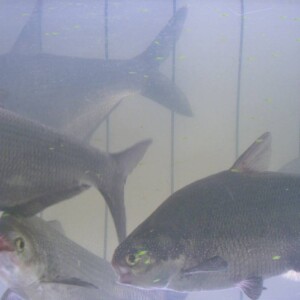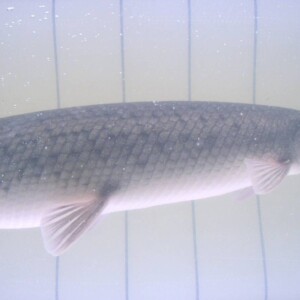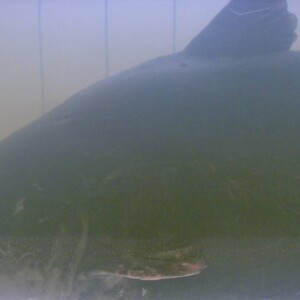Bringing Back Migratory Fish
It’s March 2024 and dangling precariously over the Santee River in the United States is the next big global innovation in highly efficient fish passages. The waters below are rising fast… a flood is coming. Hanging from the hook of the crane is 1.3 million USD of funding from the U.S Department of Energy (DOE) in the form of the flagship product of Fishheart Ltd., its state-of-the-art hydraulic Fishheart unit. Some 7500 km away, in Finland, the phone is ringing and Fishheart’s management is dealing with the situation.
Not all pilot projects have as dramatic a story as Fishheart’s latest test in South Carolina, but to understand how it all came to this point, we need to start at the beginning. In 2016, Tarmo Aittaniemi, innovator of Fishheart’s patented system came together with fellow fishermen Mika Sohlberg and Magnus Breitenstein with a common goal in mind; to restore fish populations to their built rivers while providing the technology and knowhow to do so from three lifetimes worth of fishing.
The first Fishheart test unit entered the waters of Finland during the summer of 2017 at the Merikoski Power Station, Oulu. Since then, their success has gained them traction in the Nordics where they permanently operate five units in four different sites.
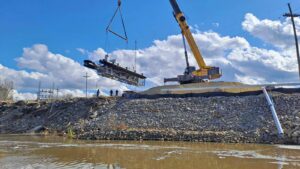
© Fishheart
Fishheart Ltd. takes its name from its unique design; based, like a heart, on chambers and valves. Unlike most fish passages, Fishheart is a completely adjustable system which eliminates the chance of miscalculation in positioning the entry to the fishway, allowing the team behind Fishheart to continuously monitor and improve the performance of its fishways. A fully functioning fishway is made up of a pipeline, a floating Fishheart unit, a control container with electrical system hardware and monitoring units. The floating unit is strategically placed below the dam wall and attached to the shore using adjustable wire ropes.
Once fish enter the area, they are attracted by the outer attraction flow coming from the floating Fishheart unit. The outer attraction flow acts as a beacon for the fish who then become attracted by the inner attraction flows under the water. The inner attraction flows lead the migratory fish into one of two chambers. Once inside the chamber, Fishheart’s AI based recognition system identifies the fish, its species, the number of fish inside the chamber, their size, and relays that information to an external or local server before approving or denying the system to open the fishway. The whole process is automated and controlled remotely using preset preferences dependent on the location and takes place in a split second. Once the fish has been approved, the system starts a series of functions and the fish travels over the dam wall through adjustable piping aided by the siphon effect with water used from the upper basin. This makes Fishheart a closed system with fish being protected by water the entire time and all water used in the process returning to the upper basin for use in power production. Invasive species can be taken away from the aquatic ecosystem through a separate pipeline.

© Fishheart
At the end of September 2023, in a bid to tackle the biodiversity crisis that continues to be globally tied to the move towards clean, renewable energy sources, the DOE announced its allocation of funding for six fish passage research projects. Fishheart Ltd., together with the Electric Power Research Institute (EPRI), was allocated the largest funding of 1.3 million USD to evaluate the system´s ability to provide safe, timely, and effective passage of American Shad at the Santee Spillway hydropower project in Pineville, South Carolina. The test ran from 28.2–2.4. and was halted between 7-19.3 due to a need of spilling water through the Santee River, which raised the water level by 8 meters. With funding from the U.S. Department of Energy (DOE), the field evaluation was hosted by Santee Cooper and led by the Electric Power Research Institute (EPRI) with the testing conducted by Alden Research Laboratory (a Verdantas company) and DOE’s Pacific Northwest National Laboratory (PNNL). The preliminary results recently presented by Alden exceeded expectations with respect to the number of fish and species passed through the system. Over the course of 14 test days after the flooding, the Fishheart unit was able to safely move 3410 fish into a collection tank for recovery and monitoring of condition. Of these 3410 fish, 15 different species were noted with a bonus point being that using its attraction flow and underwater guiding system, the Fishheart fishway was able to provide safe passage to fish swimming at all levels under the water. The unit safely moved 1159 Blue Catfish, known for their bottom dwelling behavior. In addition, 732 fish used the Fishheart during the first week of the test before the flooding started, so in total 4142 fish used the fishway during the entire duration of testing, of which 291 were American Shad, the primary species of interest for the evaluation at the Santee Dam. The well-being of fish after passage was monitored by Alden in separate evaluation tanks and preliminary indications are that passed fish were in good health. And what about that phone ringing back in Finland? Well, the unforeseen flooding gave Fishheart Ltd an unexpected but positive bonus result for their longevity in the fish migration industry. Once the alarms had been set off and the spillway was soon to be put under extreme pressure, it took only 4 hours to get the Fishheart unit out of the water. The unit was safely moved away from the path of destruction and reinstalled in a similar time frame. There was no need to clear out mud or debris or any other fuss that may have arisen in the same situation with a traditional fish passage.
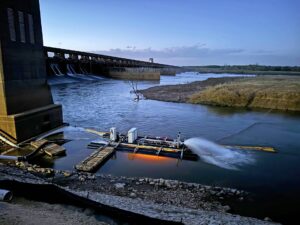
© Fishheart
Following their success in the US, Fishheart is now setting their sights on the central European markets of Germany, Austria, Switzerland, and France, providing an affordable solution to the growing pressure on EU countries to fulfil their commitment to the restoration of their river systems in the coming years. Alongside this they are launching a pilot project in Australia later this year.

